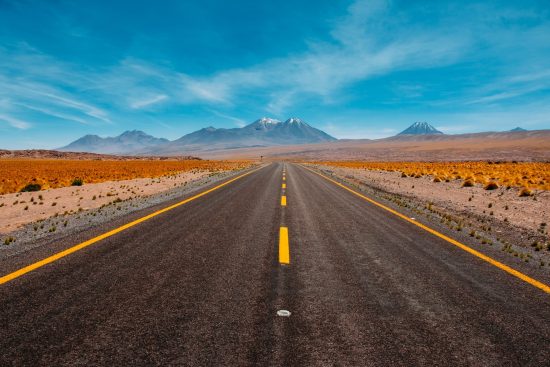
Ah, the American Dream. It’s like apple pie and baseball, isn’t it? A phrase so deeply embedded in our national consciousness, you’d think it was as old as the stars and stripes themselves. But what is it, really? For many, the American Dream has traditionally been about the promise of opportunity. Imagine a hardworking individual who starts with nothing, absolutely zilch. Through grit, determination, and a sprinkle of good luck, they climb the ladder of success. They buy a house with a white picket fence, settle down to raise 2.5 kids, and retire with a comfortable pension. It’s the belief that in this land of the free, anyone—yes, anyone—can achieve prosperity and happiness if they put in the work. It’s a compelling narrative, a shining beacon that has drawn people from around the globe to the United States. But is this age-old concept still valid? As we dig deeper into the layers of this dream, you might find that its modern version is not quite the same as the postcard picture we’ve held onto for so long.
Origins and Evolution
Way back when, think post-World War II era, the American Dream was a pretty straightforward concept. Picture it: soldiers coming home, the economy booming like fireworks on the Fourth of July, and people were buying homes left and right. I mean, back then, the Dream was almost a tangible thing—you could literally reach out and touch it, or at least sign a mortgage for it. It often meant getting a stable job, usually one that you’d stick with until you got that gold watch at retirement. Yeah, remember when people actually retired from the same place they started working?
But times, my friends, have changed. Fast forward to today, and the notion of staying at the same job for life sounds as outdated as a rotary phone. The economy is more like a roller coaster than a steady incline. This isn’t your grandparents’ American Dream; it’s been remodeled, renovated, and for some, it feels completely out of reach. What once seemed like guarantees—homeownership, stable employment, and that elusive “better life” for your kids—now feel more like aspirations than certainties. As we wade through these modern complexities, it becomes clear that the American Dream is going through a sort of identity crisis. So what does it mean today? Well, let’s dive into that.
Shift in Values

Alright, so we’ve talked about the roots of the American Dream, how it was practically a life script handed down from one generation to the next. But something’s been happening in the past few years—call it a twist in the plot. If you go out and talk to people on the street, ask your neighbor, or even think about what you truly want, you’ll notice that the priorities are shifting.
Here’s a bit of what’s topping the charts these days:
- Flexibility Over Stability: People are prioritizing jobs that allow them a work-life balance.
- Experiences Over Possessions: Forget the two-car garage; many are more interested in a passport full of stamps.
- Personal Growth Over Financial Gain: The desire to learn and grow is often valued over climbing a corporate ladder.
- Social Awareness Over Individual Success: There’s a growing focus on how one’s actions affect the community and the planet.
- Health and Wellness Over Material Wealth: With the rise of wellness culture, the definition of “rich” is expanding to include mental and physical well-being.
It’s like the fabric of the Dream is getting a modern-day makeover. Interestingly, a report from the Pew Research Center supports this shift, indicating that values and perceptions are indeed evolving. We’re not just talking about a generational shift here, folks. It’s more like a cultural metamorphosis, affecting everyone from baby boomers to millennials to Gen Z. It makes you wonder—what is the Dream becoming, and is it a change for the better or worse? Well, let’s keep peeling back those layers.
Economic Realities
Now let’s talk dollars and cents, or maybe more accurately—student loans and skyrocketing rents. Remember when the pinnacle of the American Dream involved home ownership? There was a time when owning a slice of land, however small, was like the cherry on top of the American sundae. Well, things are a bit sticky now. We’re living in a world where the cost of living feels like it’s on a never-ending uphill hike, yet wages seem to be strolling leisurely in the park.
Take student debt, for example. Gone are the days when you could work a summer job and pay your way through college. Today, you might need a treasure map to find a way to afford higher education without shackling yourself to decades of debt. And speaking of shackles, the idea of getting a mortgage and settling down? For many, that’s more of a fantasy than an achievable goal.
So, where does that leave our American Dream? In this economic landscape, it’s been forced to adapt, to evolve. People are finding new paths to happiness and success that don’t necessarily pass through Wall Street or Main Street. They’re making the Dream their own, even if that means redefining what “success” and “prosperity” actually look like. But is this new version of the Dream open to everyone? Hold that thought; we’re getting there.
Diverse Perspectives

Alright, time to talk about the elephant in the room—the fact that the American Dream hasn’t been a one-size-fits-all deal. Nope, it’s been more like a custom suit, tailored differently depending on who you are and where you come from. The Dream is a patchwork quilt, stitched together with different experiences, expectations, and realities.
- First-generation Americans: They often see the Dream as an opportunity for a fresh start, a break from the limitations they faced in their countries of origin.
- Racial and Ethnic Minorities: For these groups, the Dream often includes an added layer—breaking through social barriers and prejudices.
- Women: In a world that’s been predominantly male-centric, the American Dream for many women includes shattering glass ceilings and challenging gender roles.
For more on this, the Smithsonian has some deep-diving resources about the diversity of American experiences. You see, the Dream is not a monolithic entity; it’s as diverse as the people who dream it. This multifaceted nature raises some questions, though. Is the American Dream truly attainable for everyone, or is it a vision seen more clearly through certain lenses? Just a little food for thought as we continue unraveling this intricate tapestry.
New Definitions
As we’ve walked through the changing landscape of the American Dream, one thing has become abundantly clear: the Dream isn’t what it used to be. So, what’s the new definition? Well, it’s almost like asking what the best ice cream flavor is—everyone’s got their own take on it. For some, it might be building an online business from the ground up. Others may find their slice of paradise in artistic expression or even in simpler, more tangible aspirations like coastal living. For some, it’s less about the house and the car, and more about the quality of life and the freedom to chase what truly makes them happy.
This freedom to redefine the Dream is both a privilege and a challenge. It’s no longer a cookie-cutter ideal, neatly packaged and universally desirable. Instead, it’s a more fluid concept, able to mold and shift to fit the diverse experiences and aspirations of individuals across the country. We’re not just talking about achieving financial success or hitting life milestones in a particular order anymore. The Dream has expanded, becoming a vessel to hold whatever it is that each of us values most. But as we’re reimagining this Dream, how do we ensure it’s a vision that’s inclusive for all? Ah, my friends, that’s a question for the ages.
Future of the Dream
So here we are at the end of our little journey, peeling back the layers of what the American Dream means today. We’ve seen how it has evolved, how our values are shifting, and how the economic landscape is changing the game. We’ve also touched on how this Dream looks different for different people. As we move forward, the question isn’t just what the Dream will become, but how can we make it attainable for everyone? That’s the next chapter in this ever-evolving American story, and it’s one we’ll all write together.







